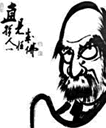Hello everyone:
I recently finished reading a book from the Treeleaf recommended reading list called The Fundamental Wisdom of the Middle Way by Jay L. Garfield -- though not light reading by any means, the book was an excellent commentary on Nagarjuna's Mulamadhyamakakarika. Together with some lectures on podcast at the Upaya Zen Center website by John Dunne, the book really helped me begin to gain an understanding of the perplexing tetralemma which I first encountered several years ago in the Diamond Sutra. The basic structure goes:
A
-A
Both A and -A
Neither A nor -A
One well-known example of this form from early Buddhist literature is:
The world is finite.
The world is infinite.
The world is both finite and infinite.
The world is neither finite nor infinite.
When I first encountered these sorts of passages in Buddhist literature, I was left dumbfounded by what seemed to be mysterious riddles. My mind could not accept the blatant inconsistency and violation of what I have recently learned is called Aristotle's law of the excluded middle. Even now, my insight into these sorts of passages comes and goes, but I have persisted in studying the tetralemma because I strongly sense that this form is the finger pointing at the moon so to speak. I've never formally studied logic, so that leaves me at a big disadvantage...
However, through the years, one explanation that resonates with me (perhaps because of its simplicity) is that these passages must be read in light of the doctrine of two truths and so as an expression of conventional (conditioned) existence v. the ultimate reality. In Garfield's book, the tetralemma is described as a way to say something about which nothing can really logically be said. Another commentary that I found tonight suggests that these verses are a reflection of anhomomorphic rather than conventional logic. While the article is over my head in many respects, I found it particularly interesting because it is persuasively argued that the logic of the tetralemma is the same as is used to accommodate quantum physics. I'm a nerd, so the link between quantum physics and Buddhist philosophy is one that I have found really fascinating and validating in many ways. Here is a link if you are interested in reading more about this argument:
So, the reason I posted all of this is because I'm really interested in getting others' feedback and thoughts about these sorts of passages, and how you go about interpreting them.
Gassho,
Tanjin
SatToday
I recently finished reading a book from the Treeleaf recommended reading list called The Fundamental Wisdom of the Middle Way by Jay L. Garfield -- though not light reading by any means, the book was an excellent commentary on Nagarjuna's Mulamadhyamakakarika. Together with some lectures on podcast at the Upaya Zen Center website by John Dunne, the book really helped me begin to gain an understanding of the perplexing tetralemma which I first encountered several years ago in the Diamond Sutra. The basic structure goes:
A
-A
Both A and -A
Neither A nor -A
One well-known example of this form from early Buddhist literature is:
The world is finite.
The world is infinite.
The world is both finite and infinite.
The world is neither finite nor infinite.
When I first encountered these sorts of passages in Buddhist literature, I was left dumbfounded by what seemed to be mysterious riddles. My mind could not accept the blatant inconsistency and violation of what I have recently learned is called Aristotle's law of the excluded middle. Even now, my insight into these sorts of passages comes and goes, but I have persisted in studying the tetralemma because I strongly sense that this form is the finger pointing at the moon so to speak. I've never formally studied logic, so that leaves me at a big disadvantage...
However, through the years, one explanation that resonates with me (perhaps because of its simplicity) is that these passages must be read in light of the doctrine of two truths and so as an expression of conventional (conditioned) existence v. the ultimate reality. In Garfield's book, the tetralemma is described as a way to say something about which nothing can really logically be said. Another commentary that I found tonight suggests that these verses are a reflection of anhomomorphic rather than conventional logic. While the article is over my head in many respects, I found it particularly interesting because it is persuasively argued that the logic of the tetralemma is the same as is used to accommodate quantum physics. I'm a nerd, so the link between quantum physics and Buddhist philosophy is one that I have found really fascinating and validating in many ways. Here is a link if you are interested in reading more about this argument:
So, the reason I posted all of this is because I'm really interested in getting others' feedback and thoughts about these sorts of passages, and how you go about interpreting them.
Gassho,
Tanjin
SatToday







 ),
),

 Same for whether the universe is both infinite and finite, if those are mutually exclusive propositions. Buddhist logic expands many of our usual ways of looking at things but, alas, it does not make every crazy possibility true.
Same for whether the universe is both infinite and finite, if those are mutually exclusive propositions. Buddhist logic expands many of our usual ways of looking at things but, alas, it does not make every crazy possibility true.
Comment